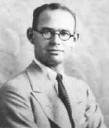Gareth Jones Soviet Union Newspaper Articles 1930-33

By Aussiegirl
Following is a telling excerpt from the website devoted to the story of Gareth Jones. What is the mystery that calls one man to risk his very life in order to tell the truth while others lie in order to get ahead? It is the ultimate moral question that has bedeviled man since the beginning of time. It is heroes like Jones who ultimately bring down despots, while accomodators and liars like Duranty and Eugene Lyons of the New York Times give them aid and comfort and thus become complicit in their horrific and evil crimes. The New York Times has still to return the fraudulently won Pulitzer of Walter Duranty. But his name has become synonymous with infamy as surely as that of Quisling and Benedict Arnold, while Jones continues to shine as a beacon of honesty and courage.

Gareth Jones Soviet Union Newspaper Articles 1930-33
Early in 1933, Gareth made an extensive tour of Europe. In February one month after Adolf Hitler had been made Chancellor of Germany (and just 3 days before the burning of the Reichstag), Gareth was afforded the 'privelidge' to become the first foreign journalist to fly with the newly elected dictator to a rally in Frankfurt-am-Main.
The following month in early March 1933, after an 'off-limits' walking tour of the Soviet Ukraine, Gareth, a young man of just 27 years, exposed to the world the terrible famine-genocide that had befallen the Soviet Union and gave reasons for this tragic state of events. It was in the same week that Malcolm Muggeridge had three unsigned famine articles in the Manchester Guardian published, though at the time, due to the more reported Jewish problems in Germany, they went almost unnoticed. Gareth’s story however, broke world-wide with much credence (by virtue of his position with Lloyd George) from a Berlin press interview on the 29th March 1933, and was published in the USA as 'exclusives' on the same day by Pulitzer prize winners; H. R Knickerbocker (1931) and Edgar Adsel Mowrer (1933)..
Even though Gareth revealed the truth, he was publicly denounced as a liar by several Moscow resident Western journalists, including The New York Times' and incumbent 1932 Pulitzer Prize Winner, Walter Duranty. In 1937, Eugene Lyons, a Moscow based correspondent, who repudiated Gareth four years earlier, was apologetic for his actions in his book Assignment in Utopia:
"Throwing down Jones was as unpleasant a chore as fell to any of us in years of juggling facts to please dictatorial regimes—but throw him down we did, unanimously and in almost identical formulas of equivocation. Poor Gareth Jones must have been the most surprised human being alive when the facts he so painstakingly garnered from our mouths were snowed under by our denials."
Undaunted, in a published letter to the New York Times, Gareth reasserted his observations of famine and also stingingly rebutted Duranty describing Moscow-based foreign correspondents as being "masters of euphemism".


0 Comments:
Post a Comment
<< Home